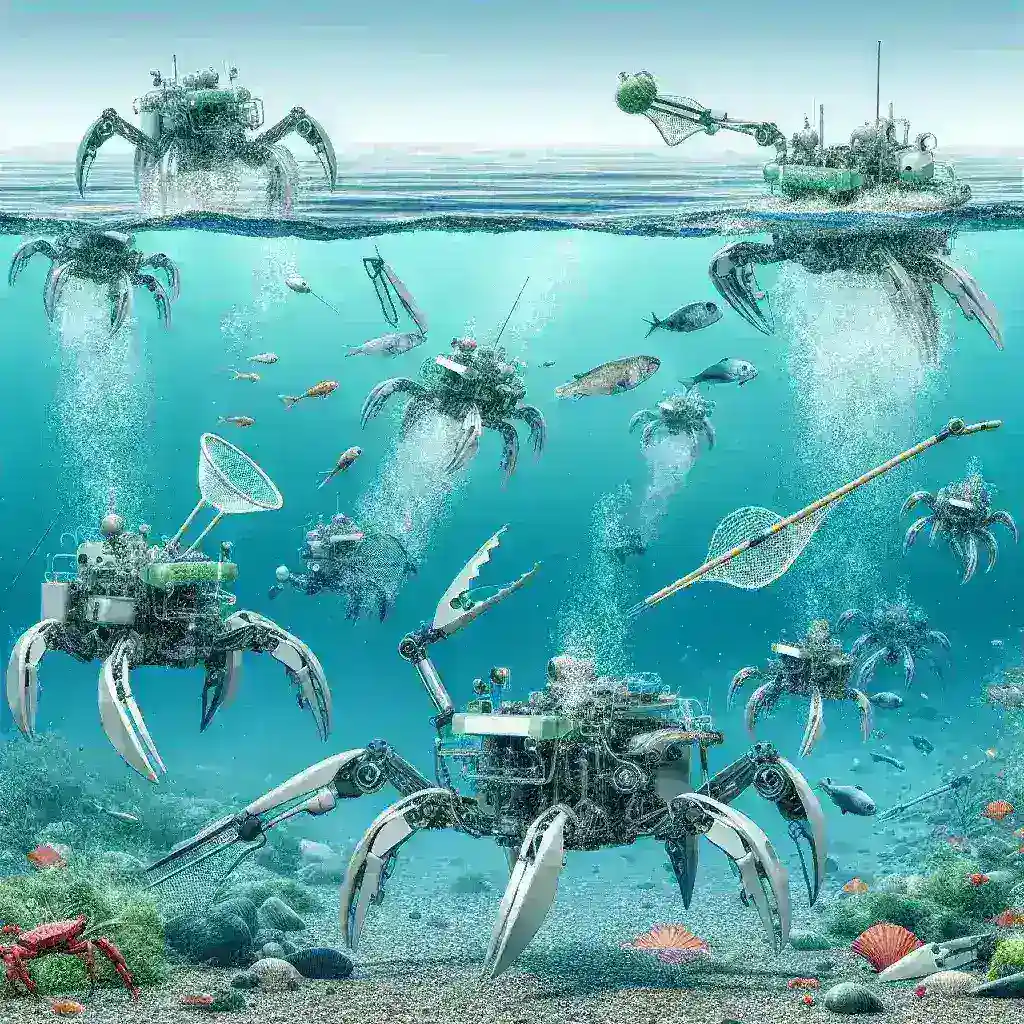Introduction
As environmental issues continue to escalate globally, the need for innovative solutions has never been more pressing. Amphibious robotic swarms have emerged as a promising technology for environmental cleanup. These sophisticated machines can operate on both land and water, making them ideal for tackling pollution in various ecosystems. In this article, we will delve into the concept of amphibious robotic swarms, their applications in environmental cleanup, the benefits and challenges associated with their deployment, and their potential for the future.
Understanding Amphibious Robotic Swarms
Amphibious robotic swarms consist of multiple drones or robots that work collaboratively to perform tasks in different environments. By utilizing advanced algorithms, these swarms can coordinate their actions, share information, and adapt to changing conditions. This collaborative approach allows them to cover extensive areas efficiently, making them highly effective for environmental cleanup operations.
Key Components of Amphibious Robotic Swarms
- Mobility: These robots are designed to navigate both land and water, allowing them to access hard-to-reach areas.
- Sensing Technology: Equipped with sensors, amphibious robots can detect pollutants and assess environmental conditions.
- Communication Systems: The swarming capability relies on real-time communication among robots, enabling them to make quick decisions.
- Energy Efficiency: Many amphibious robots utilize renewable energy sources, enhancing their sustainability.
The Role of Amphibious Robotic Swarms in Environmental Cleanup
Amphibious robotic swarms can play a vital role in various environmental cleanup initiatives. Their applications include:
1. Oil Spill Response
Oil spills pose a significant threat to marine life and coastal ecosystems. Amphibious robotic swarms can be deployed quickly to contain and clean up spills, using specialized tools to absorb or disperse oil.
2. Habitat Restoration
These robots can help in restoring habitats by removing debris, pollutants, and invasive species from wetlands and shorelines, promoting biodiversity.
3. Waste Management
Amphibious robots can aid in collecting waste from water bodies, such as plastics and other debris, ensuring cleaner environments.
4. Monitoring and Assessment
Equipped with advanced sensors, these robots can monitor environmental health, providing valuable data for scientists and policymakers.
Benefits of Using Amphibious Robotic Swarms
There are several advantages associated with the use of amphibious robotic swarms for environmental cleanup:
- Efficiency: Swarms can cover large areas in a fraction of the time it would take traditional cleanup methods.
- Precision: These robots can accurately locate and address pollution hotspots, minimizing disturbance to surrounding ecosystems.
- Cost-Effective: Over time, the use of robotic swarms can reduce the costs associated with environmental cleanup operations.
- Scalability: The size of the swarm can be adjusted based on the specific needs of the cleanup operation.
Challenges and Limitations
Despite their potential, there are challenges and limitations that must be addressed:
- Technical Complexity: Developing and maintaining sophisticated robotic systems can be resource-intensive.
- Environmental Impact: The deployment of robotic swarms must be carefully planned to avoid unintended consequences on local ecosystems.
- Regulatory Hurdles: Navigating regulations surrounding the use of autonomous robots in public spaces can be complex.
- Public Perception: Gaining public trust and acceptance for the use of robots in environmental work is essential.
Future Prospects
The potential for amphibious robotic swarms in environmental cleanup is enormous. As technology continues to advance, we can expect:
1. Improved Autonomy
Future robotic swarms will likely feature enhanced autonomy, allowing them to make decisions with minimal human intervention.
2. Enhanced Collaboration
Integration with other technologies, such as AI and machine learning, will improve the efficiency and effectiveness of these swarms.
3. Broader Applications
Beyond environmental cleanup, amphibious robots may find applications in disaster response, search and rescue missions, and ecological monitoring.
Conclusion
Amphibious robotic swarms represent a groundbreaking approach to environmental cleanup, combining technology and collaboration to address pressing ecological challenges. While there are hurdles to overcome, the benefits of deploying these swarms in various environmental contexts are clear. As we move towards a more sustainable future, the integration of these innovative solutions could play a crucial role in restoring and protecting our planet.


Leave a Reply